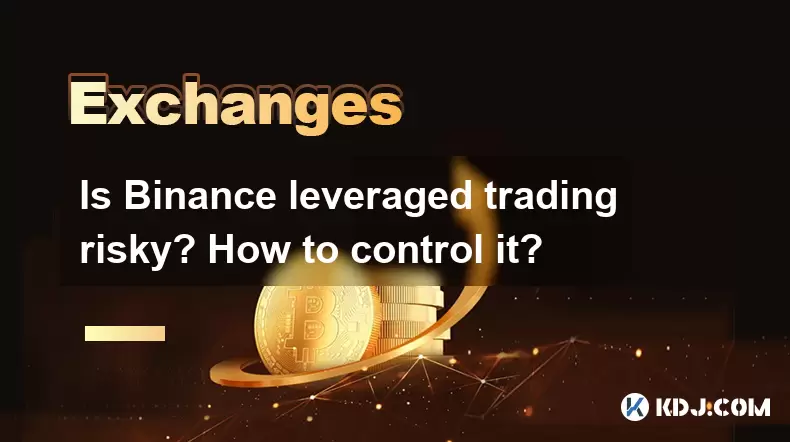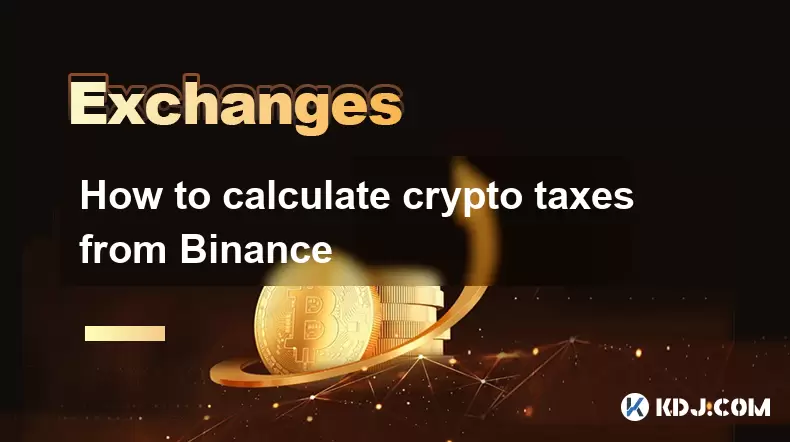-
 Bitcoin
Bitcoin $117500
2.15% -
 Ethereum
Ethereum $3911
6.19% -
 XRP
XRP $3.316
10.79% -
 Tether USDt
Tether USDt $1.000
0.01% -
 BNB
BNB $787.2
2.24% -
 Solana
Solana $175.2
4.15% -
 USDC
USDC $0.9999
0.00% -
 Dogecoin
Dogecoin $0.2225
8.40% -
 TRON
TRON $0.3383
0.28% -
 Cardano
Cardano $0.7868
6.02% -
 Stellar
Stellar $0.4382
9.34% -
 Hyperliquid
Hyperliquid $40.92
7.56% -
 Sui
Sui $3.764
7.63% -
 Chainlink
Chainlink $18.48
10.66% -
 Bitcoin Cash
Bitcoin Cash $582.1
1.88% -
 Hedera
Hedera $0.2601
6.30% -
 Avalanche
Avalanche $23.33
4.94% -
 Ethena USDe
Ethena USDe $1.001
0.02% -
 Litecoin
Litecoin $122.3
2.04% -
 UNUS SED LEO
UNUS SED LEO $8.969
-0.27% -
 Toncoin
Toncoin $3.339
0.86% -
 Shiba Inu
Shiba Inu $0.00001287
4.30% -
 Uniswap
Uniswap $10.43
7.38% -
 Polkadot
Polkadot $3.861
5.08% -
 Dai
Dai $1.000
0.02% -
 Bitget Token
Bitget Token $4.513
3.41% -
 Monero
Monero $267.7
-6.18% -
 Cronos
Cronos $0.1499
4.14% -
 Pepe
Pepe $0.00001110
5.15% -
 Aave
Aave $284.9
8.28%
Is Binance leveraged trading risky? How to control it?
Leveraged trading on Binance can be risky due to potential significant losses and liquidation; use stop-loss orders and manage leverage wisely to control risks.
May 17, 2025 at 11:36 am

Is Binance leveraged trading risky? How to control it?
Leveraged trading on Binance, like any form of trading with borrowed funds, carries inherent risks that traders must understand and manage carefully. Leveraged trading allows traders to amplify their potential returns by borrowing funds to increase their position size. However, this also amplifies the potential losses, making it a double-edged sword. In this article, we will explore the risks associated with Binance leveraged trading and provide detailed strategies to control these risks effectively.
Understanding the Risks of Leveraged Trading on Binance
Leveraged trading on Binance involves using borrowed funds to trade cryptocurrencies. The primary risk associated with this type of trading is the potential for significant losses. When you use leverage, even small price movements can result in large gains or losses. For instance, if you are using 10x leverage and the market moves against you by just 1%, you could lose 10% of your position. This risk is magnified if you are not using proper risk management techniques.
Another risk is liquidation. When trading with leverage, you must maintain a certain amount of equity in your account, known as the maintenance margin. If your account balance falls below this level due to market movements, your position may be liquidated, and you could lose your entire investment. Understanding the concept of liquidation and how it works is crucial for managing risks in leveraged trading.
Setting Up Leveraged Trading on Binance
To engage in leveraged trading on Binance, you need to follow a few steps to set up your account and understand the platform's features. Here’s how you can do it:
- Open a Binance account: If you don't already have one, you'll need to sign up for a Binance account. Go to the Binance website, click on "Register," and follow the prompts to create your account.
- Enable futures trading: Once your account is set up, you need to enable futures trading. Navigate to the "Futures" section on the Binance website, and click on "Open Now" to activate your futures account.
- Deposit funds: You'll need to deposit funds into your futures wallet. Click on "Transfer" in the futures section, select the cryptocurrency you want to deposit, and enter the amount you wish to transfer from your spot wallet to your futures wallet.
- Choose your leverage: Binance offers different levels of leverage, ranging from 1x to 125x, depending on the trading pair. Select the leverage level you want to use for your trade.
Strategies to Control Risks in Binance Leveraged Trading
To manage the risks associated with leveraged trading on Binance, you need to implement effective risk management strategies. Here are some key strategies to help you control risks:
Use Stop-Loss Orders
Stop-loss orders are essential tools for managing risk in leveraged trading. A stop-loss order automatically closes your position when the market reaches a certain price level, helping to limit your losses. To set a stop-loss order on Binance:
- Go to the futures trading interface.
- Open a position and click on the "Stop-Loss" button.
- Enter the price at which you want the stop-loss order to trigger.
- Confirm the order.
Using stop-loss orders can help you avoid significant losses by automatically closing your position if the market moves against you.
Manage Your Leverage Wisely
Choosing the right level of leverage is crucial for managing risk. Higher leverage can lead to higher potential returns, but it also increases the risk of liquidation. It's important to use leverage conservatively, especially if you are new to leveraged trading. Start with lower leverage levels, such as 2x or 5x, and gradually increase as you gain more experience and confidence.
Diversify Your Portfolio
Diversification is another key strategy for managing risk in leveraged trading. Instead of putting all your funds into a single position, spread your investments across different cryptocurrencies and trading pairs. This can help reduce the impact of a single trade going against you. For example, you might allocate a portion of your funds to Bitcoin futures, another portion to Ethereum futures, and so on.
Monitor Your Positions Closely
Monitoring your positions is essential when trading with leverage. Cryptocurrency markets can be highly volatile, and prices can move quickly. Regularly check your open positions and be prepared to adjust your strategy if necessary. Use the Binance trading interface to keep an eye on your positions and market conditions.
Understanding Liquidation and Margin Calls
Liquidation and margin calls are critical concepts in leveraged trading that you need to understand to manage your risks effectively. Liquidation occurs when your account balance falls below the maintenance margin level, and your position is automatically closed to prevent further losses. A margin call is a warning that your account is approaching the liquidation level, giving you a chance to add more funds or close your position to avoid liquidation.
To avoid liquidation, you need to keep an eye on your account balance and the market conditions. If you receive a margin call, you have a few options:
- Add more funds to your account to increase your margin.
- Close part of your position to reduce your exposure.
- Adjust your leverage to a lower level to reduce the risk of liquidation.
Using Risk Management Tools on Binance
Binance offers several risk management tools that can help you control the risks associated with leveraged trading. Here are some of the key tools you can use:
Position Sizing
Position sizing is the process of determining how much of your capital to allocate to a single trade. Binance allows you to set the size of your position based on the amount of leverage you are using. To manage your position size effectively:
- Calculate the maximum amount you are willing to risk on a single trade.
- Use the position size calculator on Binance to determine the appropriate size of your position based on your risk tolerance and leverage level.
Trailing Stop Orders
Trailing stop orders are another useful tool for managing risk. A trailing stop order moves with the market price, allowing you to lock in profits while limiting potential losses. To set a trailing stop order on Binance:
- Open a position and click on the "Trailing Stop" button.
- Enter the percentage or price level at which you want the trailing stop to trigger.
- Confirm the order.
Trailing stop orders can help you maximize your gains while protecting your capital.
Frequently Asked Questions
Q: Can I use leverage on all cryptocurrencies on Binance?
A: No, Binance offers leverage trading on a select number of cryptocurrencies, primarily focusing on major pairs like Bitcoin (BTC) and Ethereum (ETH). Always check the available trading pairs in the futures section of the platform.
Q: How quickly can liquidation occur on Binance?
A: Liquidation can occur very quickly on Binance, especially in volatile market conditions. It's important to monitor your positions closely and be prepared to act if the market moves against you.
Q: Is there a minimum amount required to start leveraged trading on Binance?
A: Yes, there is a minimum amount required to open a futures account on Binance, which varies depending on the cryptocurrency. For example, the minimum deposit for Bitcoin futures is typically 0.001 BTC. Check the specific requirements on the Binance platform before you start trading.
Q: Can I change my leverage level after opening a position?
A: Yes, you can adjust your leverage level after opening a position on Binance. However, be aware that changing your leverage can affect your margin requirements and the risk of liquidation. Always consider the potential impact before making changes.
Disclaimer:info@kdj.com
The information provided is not trading advice. kdj.com does not assume any responsibility for any investments made based on the information provided in this article. Cryptocurrencies are highly volatile and it is highly recommended that you invest with caution after thorough research!
If you believe that the content used on this website infringes your copyright, please contact us immediately (info@kdj.com) and we will delete it promptly.
- XRP ETF, Bitcoin ETF, and Japan: A New Era for Crypto Investing?
- 2025-08-08 14:30:12
- Crypto, Congress, and Bills: Navigating the Regulatory Landscape in 2025
- 2025-08-08 14:30:12
- Union Jack Oil, Unused Gas, and Bitcoin: A New York Minute on UK's Crypto-Energy Play
- 2025-08-08 14:50:12
- Bitcoin Price: Bullish Flag Points to $123K Breakout?
- 2025-08-08 14:50:12
- Crypto Group's WNBA Dildo Toss: Meme Coin Mania or Just Plain Dumb?
- 2025-08-08 14:55:13
- Stablecoins, Hong Kong, and On-Chain Finance: Navigating the Regulatory Maze
- 2025-08-08 12:30:12
Related knowledge

How to use margin trading on Poloniex
Aug 08,2025 at 09:50am
Understanding Margin Trading on Poloniex

How to use advanced trading on Gemini
Aug 08,2025 at 04:07am
Understanding Advanced Trading on GeminiAdvanced trading on Gemini refers to a suite of tools and order types designed for experienced traders who wan...

How to deposit USD on Bitstamp
Aug 07,2025 at 05:18pm
Understanding Bitstamp and USD DepositsBitstamp is one of the longest-standing cryptocurrency exchanges in the industry, offering users the ability to...

How to use the Kraken Pro interface
Aug 08,2025 at 09:57am
Understanding the Kraken Pro Interface LayoutThe Kraken Pro interface is designed for both novice and experienced traders seeking a streamlined experi...

How to find my transaction ID on Gemini
Aug 08,2025 at 12:50am
Understanding the Transaction ID in Cryptocurrency ExchangesA transaction ID (TXID) is a unique alphanumeric string that identifies a specific transfe...

How to calculate crypto taxes from Binance
Aug 08,2025 at 07:56am
Understanding Cryptocurrency Taxation on BinanceCalculating crypto taxes from Binance requires a clear understanding of how tax authorities classify d...

How to use margin trading on Poloniex
Aug 08,2025 at 09:50am
Understanding Margin Trading on Poloniex

How to use advanced trading on Gemini
Aug 08,2025 at 04:07am
Understanding Advanced Trading on GeminiAdvanced trading on Gemini refers to a suite of tools and order types designed for experienced traders who wan...

How to deposit USD on Bitstamp
Aug 07,2025 at 05:18pm
Understanding Bitstamp and USD DepositsBitstamp is one of the longest-standing cryptocurrency exchanges in the industry, offering users the ability to...

How to use the Kraken Pro interface
Aug 08,2025 at 09:57am
Understanding the Kraken Pro Interface LayoutThe Kraken Pro interface is designed for both novice and experienced traders seeking a streamlined experi...

How to find my transaction ID on Gemini
Aug 08,2025 at 12:50am
Understanding the Transaction ID in Cryptocurrency ExchangesA transaction ID (TXID) is a unique alphanumeric string that identifies a specific transfe...

How to calculate crypto taxes from Binance
Aug 08,2025 at 07:56am
Understanding Cryptocurrency Taxation on BinanceCalculating crypto taxes from Binance requires a clear understanding of how tax authorities classify d...
See all articles

























































































